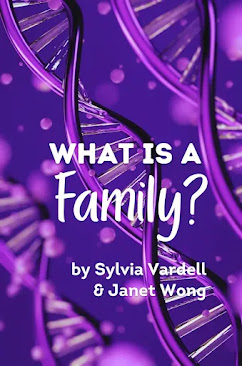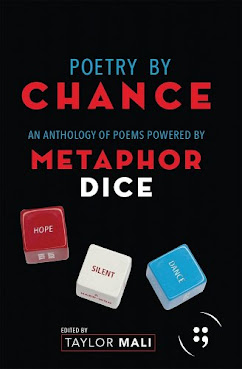 Most writers I know are avid readers. I have been for as long as I can remember. I read so much as a child that my mother often scolded me, saying things like, "You spend too much time sitting around with your nose in a book. Get up and DO SOMETHING!"
Most writers I know are avid readers. I have been for as long as I can remember. I read so much as a child that my mother often scolded me, saying things like, "You spend too much time sitting around with your nose in a book. Get up and DO SOMETHING!"
But I was doing something. I was learning how to be a writer. Without even realizing it, I was studying how writers use language, create tension, bring characters to life, etc. All that reading expanded my vocabulary, refined my literary tastes, and taught me genre-specific conventions. And the best part? My education-by-osmosis was not only painless, it was pleasurable.
When I eventually went to Vermont College to work on an MFA in Writing, I learned a more direct approach to my education as a writer. At the beginning of each semester in the program, I was required to create a personal reading list pertinent to my writing goals. The list included books on craft as well as children's/young adult books in the genre I was writing. Each month, I then had to write two critical essays discussing what I had learned from my reading.
Often, it wasn't until I sat down to write those essays that I recognized what I had absorbed.
I know the essays were the bane of many of my fellow students. But for me, the process of organizing my thoughts about a book I'd read and then putting those thoughts into writing led me to new insights--insights I might never have discovered by osmosis alone. (For an example of how this works, see the Writing Workout below.) Perhaps this is one of the reasons so many writers are also bloggers--the web has become a place to organize our thoughts and share our insights about both reading and writing.
Earlier this year, I wrote at length about the benefits of reading for writers of all ages in "Reading as a Writer," an article for the SCBWI-Illinois online newsletter. In a follow-up to that article, "More on Reading as a Writer," I shared feedback from other writers on how reading influences their work.
In case you don't have time to check out the articles, below are the books on "reading as a writer" that I mention in the first column. These books include specific strategies for getting the most from reading.
- How to Read a Book: The Classic Guide to Intelligent Reading by Mortimer Adler and Charles Van Doren
- How to Read Literature Like a Professor: A Lively and Entertaining Guide to Reading Between the Lines by Thomas Foster
- How to Read Novels Like a Professor: A Jaunty Exploration of the World's Favorite Literary Form also by Thomas Foster
- Reading Like a Writer: A Guide for People Who Love Books and for Those Who Want to Write Them by Francine Prose
 I also continue to choose books that will help me learn specific techniques. Just yesterday, I finished reading the young-adult novel The Vanishing Point: A Story of Lavinia Fontana by Louise Hawes. Fontana was a Renaissance artist who lived in 16th-century Bologna, and the novel is a fictionalized account of her adolescence. My current writing project is a historical novel set in 18th-century Italy, and is also based on the life of a real woman of the time. While reading Hawes's novel, I studied how she wove in setting details specific to the time period along with known facts from Lavinia Fontana's life. The book taught me a great deal!
I also continue to choose books that will help me learn specific techniques. Just yesterday, I finished reading the young-adult novel The Vanishing Point: A Story of Lavinia Fontana by Louise Hawes. Fontana was a Renaissance artist who lived in 16th-century Bologna, and the novel is a fictionalized account of her adolescence. My current writing project is a historical novel set in 18th-century Italy, and is also based on the life of a real woman of the time. While reading Hawes's novel, I studied how she wove in setting details specific to the time period along with known facts from Lavinia Fontana's life. The book taught me a great deal!Next time you (or your students) practice "reading as a writer," consider trying the following Writing Workout to deepen your experience.
 Writing Workout: Reading as a Writer
Writing Workout: Reading as a WriterIn preparation for "reading as a writer," decide what aspect of writing you (or your students) will study. For example, you may choose to focus on characterization, dialogue, description, plot, setting, use of flashbacks, etc. When I started at Vermont College, I knew one of the shortcomings in my own writing was a lack of specific detail. So, in my first two semesters, I read to study how authors incorporated details into their writing.
Ideally, you will read the book you are studying more than once. The first time is to simply enjoy the story. However, if you're pressed for time, you can read for pleasure and analyze at the same time.
If you are able, purchase a paperback copy of the book you've chosen. With a highlighting pen, mark occurrences of the technique you are studying. For example, while studying the use of details, I highlighted every use of sensory detail that I found. (If you're working with a borrowed book, then take notes describing each occurrence of the technique. Make sure to include the corresponding page numbers.)
Doing the above alone will likely be an eye-opening experience. But to take this exercise a step further, write a 300-800 word essay or blog post discussing what you learned from your reading. [Classroom teachers: instead of a written essay, you could have students give an oral presentation.] Your essay should include some of the examples you highlighted or noted in the text. Important: be sure to discuss how you will apply what you learned to your own writing. And don't forget--you can learn as much, if not more, from a book you don't like as from one you do.












3 comments:
Thank you for including this Writing Workout. I had a similar experience last year when I re-read Writing For Story by Jon Franklin. I was in the midst of revising my first picture book. I had read the Franklin book years ago when I was a working daily journalist, but I found his technique difficult to apply to the run-of-the-mill legislative meeting stories I wrote most days. I had decided that I was a writer who didn't/couldn't outline. Re-reading his book and using the techniques he described made my book "light-years" better than it had been. (my editor's words) I finally saw the power in the story arc and I saw ways to build tension.
Another way I learn from writing is to read authors who have published both nonfiction and fiction -- sometimes using similar material. Margaret Forester is an example. Her Lady's Maid is a novel she wrote after learning that Elizabeth Barrett Browning had a Lady's Maid about whom little was known. She was curious about the woman's life and wrote a novel to fill in the unknown parts. In reading other memoirs by Forester, I was able to see how she put nonfiction material to use in her fiction.
I love posts that get me thinking. You folks at Teaching Authors are on to something good.
Sarah
Thanks for your feedback, Sarah. And great point about comparing fiction and nonfiction treatment of the same material by the same author. I had a similar experience reading Tobias Wolff's memoir This Boy's Life and his novel, Old School, which is based on events from his life.
Regarding the Adler/Van Doren book: I should have mentioned in my blog post that I've read only two of the four books listed: How to Read Literature Like a Professor and Reading Like a Writer. The other two are on my to-read list because they look helpful, but I haven't gotten to them yet.
Post a Comment